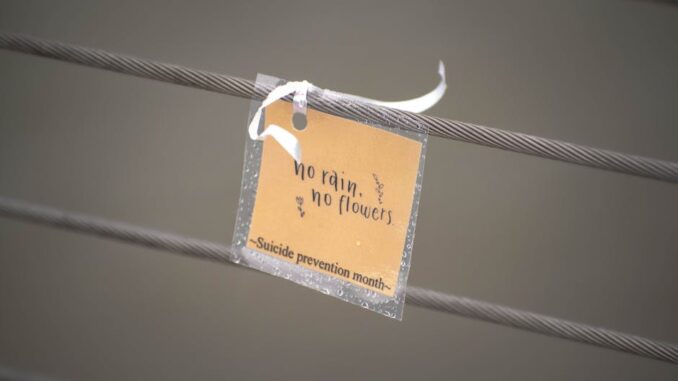
Summary
This article discusses the often-overlooked issue of suicide among older adults, highlighting the urgent need for targeted prevention campaigns. It explores the reasons behind the high suicide rates in this demographic, including social isolation, life transitions, and access to lethal means. The article also suggests strategies for prevention, focusing on community building, support systems, and open conversations about mental health.
** Main Story**
Senior suicide. It’s a topic nobody really wants to talk about, right? I mean, it’s heavy, it’s uncomfortable, but honestly, it’s a growing problem that we can’t afford to ignore any longer. Especially when you consider the fact that suicide prevention efforts often miss the mark when it comes to older adults, leaving them vulnerable. So, let’s dive into this complex issue and talk about what we can do.
The Quiet Crisis Among Us
The statistics are frankly, shocking. Did you know that adults aged 75 and older have one of the highest suicide rates in the U.S.? It’s around 20.3 per 100,000, according to the CDC. That’s not just a number; it represents real people, real lives cut short. The really disturbing part? While suicide rates have dipped for younger folks, they’ve actually increased for those over 75.
This tells you that current suicide campaigns aren’t reaching the people who need them most! I saw a study out of McLean Hospital not too long ago that showed many major suicide prevention orgs don’t even have easily accessible resources specifically geared towards older adults. It’s almost like we’re forgetting about them, which, frankly, is unacceptable. We need a laser focus on senior suicide prevention, and we need it now.
Why is this happening?
Okay, so what’s driving this, then? Well, several factors seem to be at play. First, there’s the massive issue of social isolation and loneliness. Think about it: as people age, they may experience the loss of a spouse, friends passing away, physical limitations making it harder to get around. It’s easy to feel like you’re all alone in the world.
And then you’ve got challenging life transitions like retirement. Which, sure, can be great. But it can also mean losing your sense of purpose, structure in your day and who are you outside of your work? Declining health and loss of independence adds to it. All of these factors are the perfect storm, leading to despair.
There’s also a more practical, and grim, aspect to this: older adults are more likely to use lethal methods, like firearms. When you combine that with the fact that many seniors live alone, well, the risk of a completed suicide goes way up.
Building a Bridge to Hope
So, how do we tackle this? It needs a multi-faceted approach.
-
We have to prioritize community. We need to build strong community connections and support systems to combat social isolation. Think about encouraging seniors to get involved in senior centers, volunteer programs, you name it. Anything that helps them feel like they belong and have a purpose.
-
Next, support through life transitions is key. Providing resources for emotional support, financial guidance, and even just navigating the healthcare system can make a huge difference. Empowering seniors to cope with change is vital.
-
Conversation is key, as well as destigmatizing mental illness. Open, honest talks about mental health are a must. Encouraging seniors to seek help when they need it can literally save lives.
-
Education: Family members, caregivers, healthcare professionals – they all need to be educated about the warning signs of suicide in older adults. Knowledge is power.
The Role of Tech
Don’t forget about technology’s potential here! Advancements in geriatric care are creating new ways to support seniors’ mental health and prevent suicide. Remote monitoring devices, telehealth platforms, and even mobile health apps can improve access to care and allow healthcare professionals to monitor patients remotely. Think about being able to detect early signs of distress and intervene quickly. Socially assistive robots and companion AI are other things we might look into. Can you believe it? These technologies could offer companionship, cognitive stimulation, and emotional support, which is especially helpful for those living alone.
A Call to Action, Really.
I know this is a heavy topic, but it’s one we need to address. We need targeted suicide prevention campaigns specifically for older adults. We need to promote social connection, support people through life transitions, and encourage honest, open communication about mental health. And, honestly, we need more funding for research on late-life suicide prevention.
Think about this for a second, by understanding the underlying causes and implementing effective prevention strategies, we can build a more supportive, life-affirming environment for our aging population. We owe it to them, don’t you think?


The point about the increasing rates even as younger adult rates decline is particularly striking. Could more tailored outreach, perhaps leveraging existing senior community spaces, be a more effective strategy than broad public health campaigns?
That’s a great point! Focusing on senior community spaces for outreach makes perfect sense. They’re already established hubs of connection and trust. Tailoring messages to resonate with that audience, rather than generic campaigns, could be much more impactful. What kind of tailored messaging do you think would be most effective?
Editor: MedTechNews.Uk
Thank you to our Sponsor Esdebe